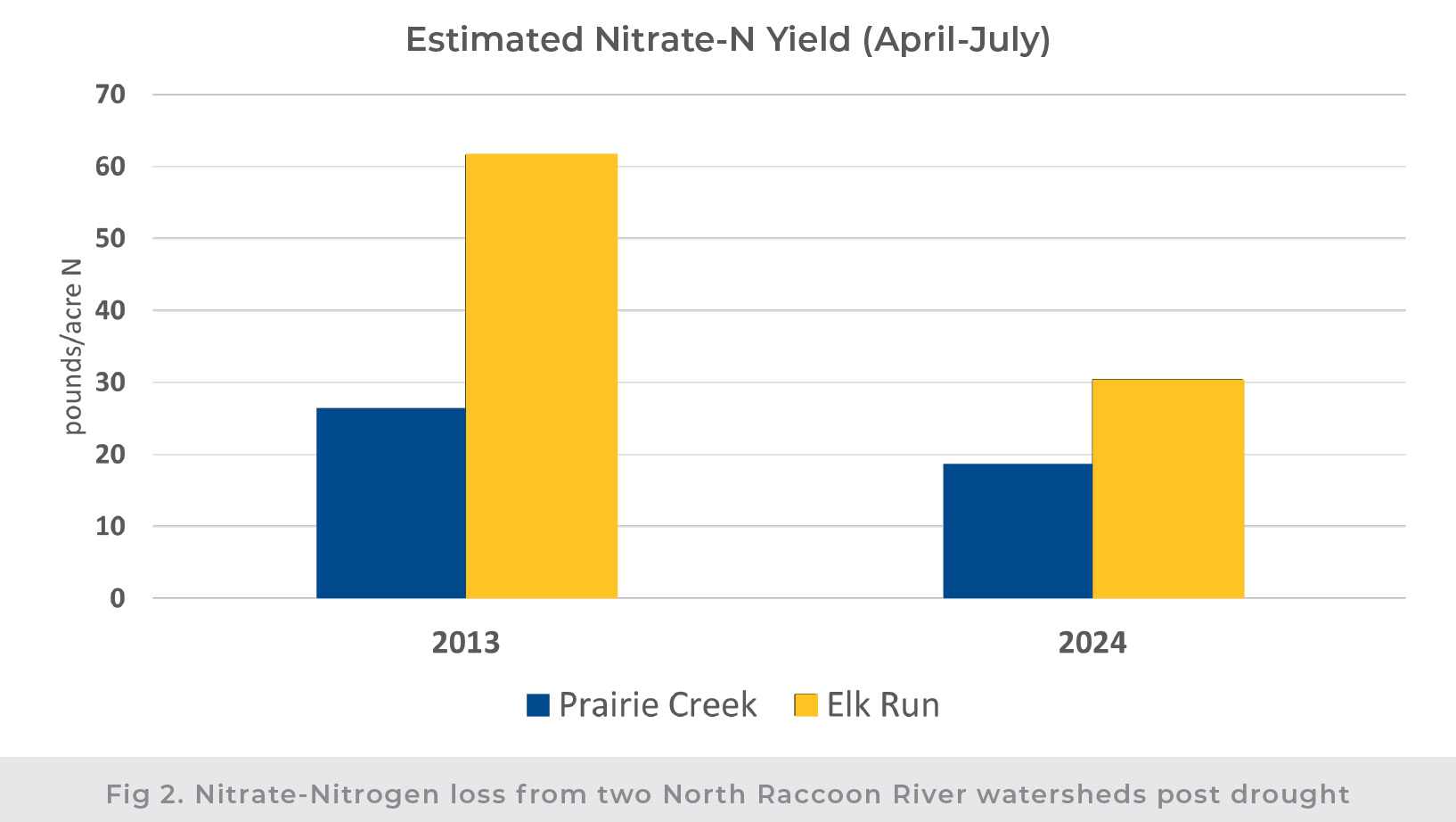
(Photo: Iowa Soybean Association / Joclyn Bushman)
2024 water monitoring results
October 29, 2024 | Tony Seeman
After nearly four years of drought in some parts of Iowa, the spring rains finally arrived and restored soil moisture to normal levels.
While good news for Iowa farmers and the crops they raise, after an extended dry period, Iowa soils can have an excess of residual nitrate-N that is vulnerable to leaching, causing drinking water issues and large algae blooms.
Monitoring for results
The Iowa Nutrient Reduction Strategy (INRS) was designed to address nutrient losses by providing a menu of proven conservation practices to be implemented across the state. The Farm to River Partnership (F2R) is a Water Quality Initiative (WQI) demonstration project with funding from the state to increase implementation and demonstrate improvements. F2R is managed by Agriculture’s Clean Water Alliance (ACWA) and supported by the Iowa Soybean Association. Historic ACWA water monitoring data identified Elk Run as a nitrate-nitrogen hotspot and led to the formation of the F2R partnership.
ACWA’s water monitoring approach focuses on sampling rivers and the smaller watersheds that contribute to them. Comparing results from different areas as water moves downstream helps target resources to have the
most significant impact and also provides feedback about conditions.
Weather variability challenges
Streamflow and nitrogen loss vary widely in response to the annual excess or precipitation deficit, similar to crop yield. Broadening the view of yield (production per area) to include environmental measurements can help assess the progress toward the INRS goals. Even though both crop and nutrient yields are impacted by weather, some key differences exist.
First, crop yields can suffer poor performance of too little or too much water, while nitrate-N yield to rivers is generally more problematic as conditions get wetter. That cycle is over once the crop is harvested and the final yield is known. Whereas in soil and water, there can be a lag where prior years’ conditions can continue contributing to nitrate-N yield. Because this cycle is irregular and often longer, assessing how well agronomic and conservation practices address the issues is confounded.
The year-to-year weather variability generally has a bigger impact than any single practice, so it is important to replicate and continue studies over time to reach a consistent result or conclusion. One way to overcome this variability is by using analog years.
While weather is never the same from one year to the next, patterns are cyclical, and different years can experience similar conditions. Comparing wet years to wet years and dry years to dry years provides a better picture than comparing one year to the next.

Another technique to evaluate environmental data over time is to use a paired approach. By comparing two separate but similar areas, we can look for differences attributed to something besides the overall conditions affecting both. Elk Run is a 21,000-acre watershed straddling the Carroll-Calhoun county line and was the original WQI demonstration area beginning in 2015. Nearby Prairie Creek drains 18,000 acres of similar agricultural land and has more typical stream nitrate-N levels. Calhoun County had extended dry spells leading into the wetter years analyzed here. The drought of 2011-2012 was slightly shorter but more pronounced than in 2022-2023.
Regarding soil nitrogen being left over, 2012 saw a significant reduction in corn yield, and 2013 also suffered from below-trend yields.

Estimated water yields were slightly higher in 2013 (~5 in. vs. 4.25 in), with the difference coming from a drier June. Overall, precipitation patterns were similar. Nitrate-N yields were lower in 2024 than in 2013. However, the difference between streams shows a greater reduction in Elk Run. If the discharge had been the same in June 2024 as in June 2013, Prairie Creek would have lost the same amount of N (26 pounds/watershed acre.) As it was, Prairie Creek N loss was 29% lower in 2024.
In Elk Run, N loss was 51% lower than in 2013. Further evidence of improvement in Elk Run is provided when the same flow is assumed for June 2024; there would still be a 34% reduction between the two years, while Prairie Creek showed none. So, while the difference in N loss from Prairie Creek was driven by less June flow, Elk Run showed a more significant reduction based on factors beyond just the difference in water yield.
The reductions shown in Elk Run suggest that increased efforts there significantly impact nitrogen loss from the watershed compared to other tributaries of the Raccoon River. As more edge-of-field practices are implemented and farmers engage in continuous improvement, the amount of N loss should continue to improve.
Back